Highschool of the Dead is an anime and manga series about a group of high school students caught in a zombie apocalypse. Writer Daisuke Satō created the manga series, and Shōji Satō illustrated it. It was first published in 2006 and later adapted into an anime television series from July to September 2010.
The story is set in present-day Japan and follows a group of high school students and their school nurse fighting for their survival against a mysterious virus that turns people into flesh-eating zombies.
The series portrays the characters’ struggles to navigate the chaos of the apocalypse, learning to work together and rely on their strengths to stay alive.
Highschool of the Dead: Inspiring Zombie Anime
If you’ve ever wondered how a group of high school students would survive the zombie apocalypse, Highschool of the Dead (HOTD) has got you covered. As the undead take over the world, leaving destruction in their wake, our not-so-average teenagers quickly learn the art of survival.
With a captivating blend of horror, action, and a touch of teenage drama, HOTD sinks its teeth into viewers, refusing to let go. This is the Walking Dead meets Gossip Girl, and we’re all here for the ride.
Authors: Daisuke Satō, Shōji Satō
Genres: Shonen manga, School story
Adaptations: Highschool of the Dead (2010)
Directed by: Tetsurō Araki
English network: AU C31NA Anime Network, Neon Alley
Episodes: 12
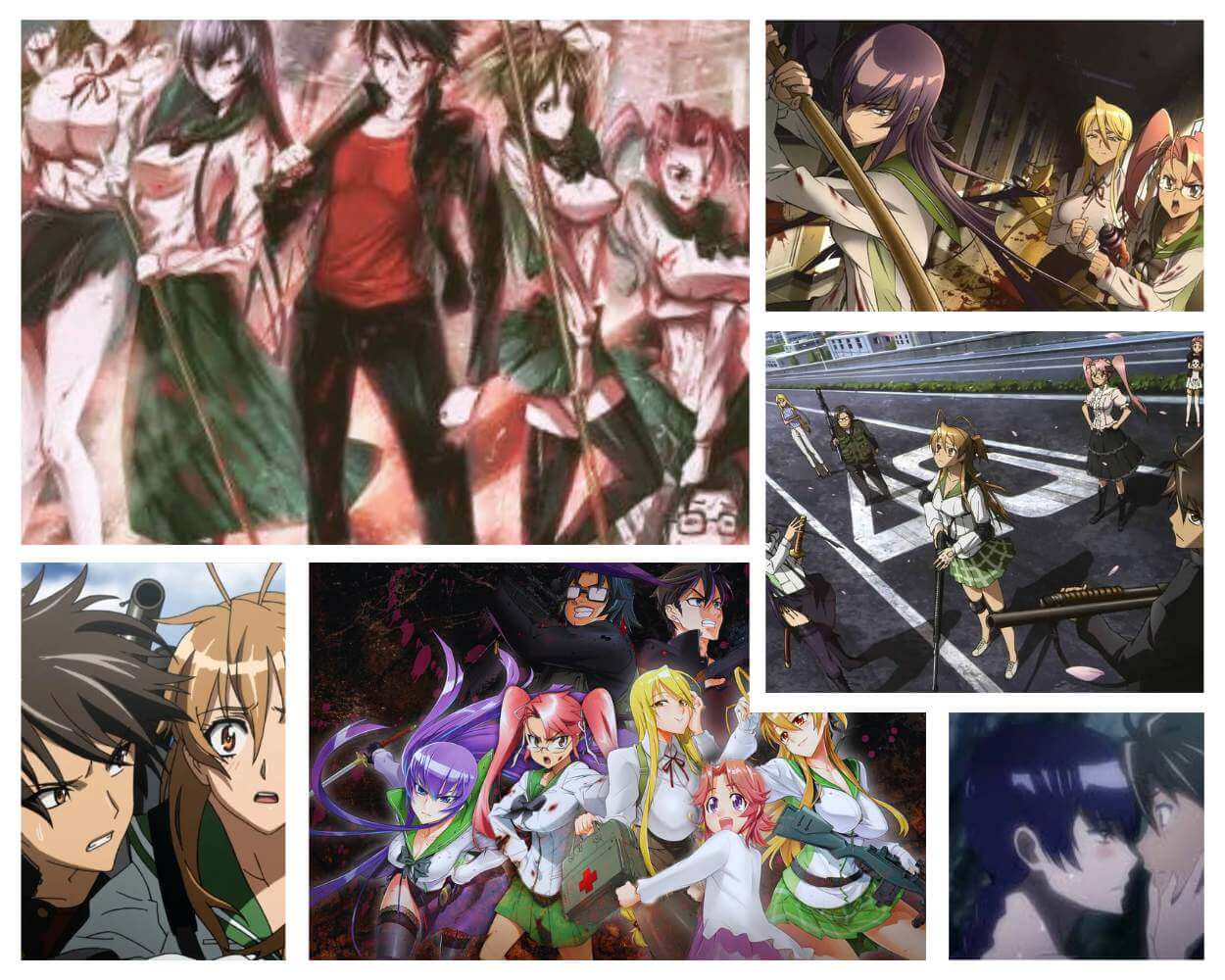
Fan Service, Anyone?
HOTD doesn’t shy away from indulging its viewers with a healthy dose of fan service. Cheeky humor and suggestive visuals abound, creating a unique juxtaposition of gore and titillation.
While some may find this aspect distracting, others embrace it as an integral part of the show’s charm. After all, what’s a high school story without a little teenage angst and hormones thrown into the mix?
Animation and Artwork: A Visual Feast
The anime’s stunning visuals and fluid animation are worth a mention in their own right. Every frame is painstakingly detailed, bringing the post-apocalyptic world to life in vibrant, gory colors.
The action sequences are masterfully choreographed, showcasing the characters’ impressive combat skills against relentless zombie hordes. HOTD’s artistry is a testament to the creative team’s talent, adding depth and appeal to an already gripping narrative.
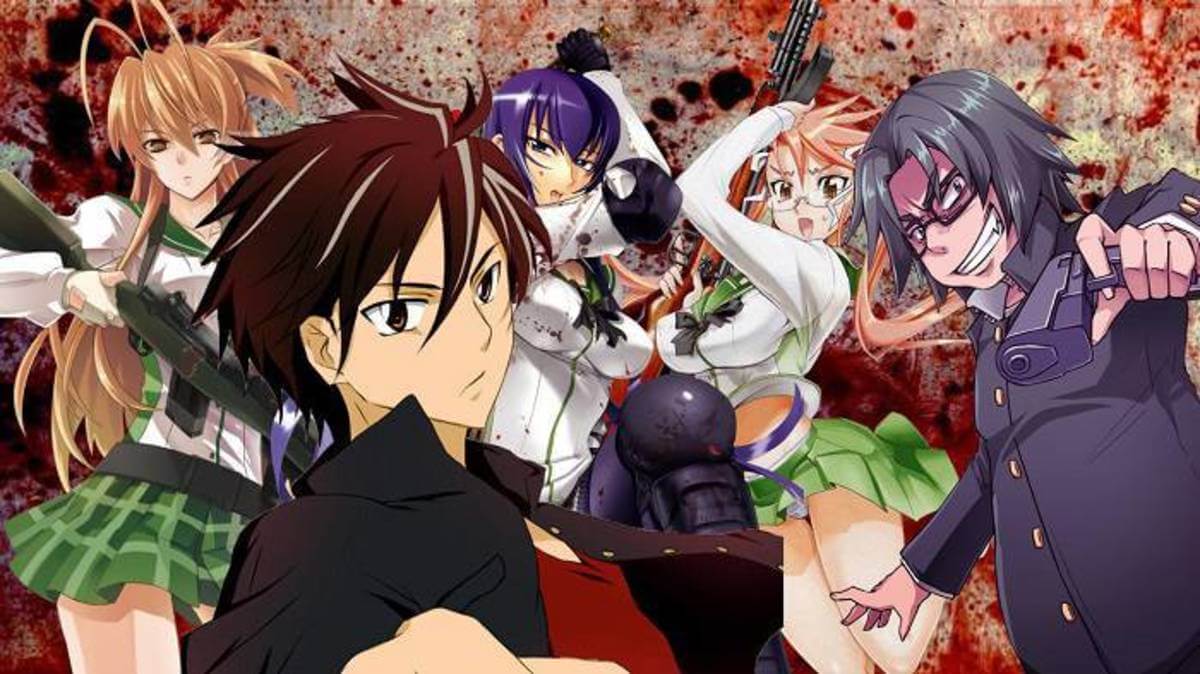
The Soundtrack: Rocking the Apocalypse
HOTD’s soundtrack is nothing short of an auditory treat. Composed by Takafumi Wada, the music perfectly complements the show’s intense action sequences and dramatic moments. The soundtrack adds depth and atmosphere to the series, from adrenaline-pumping rock tracks to hauntingly melancholic tunes.
One listens, and you’ll be humming the opening theme, “Highschool of the Dead” by Kishida Kyoudan & The Akeboshi Rockets, long after you’ve finished watching.
The Manga Connection: A Tale Left Unfinished
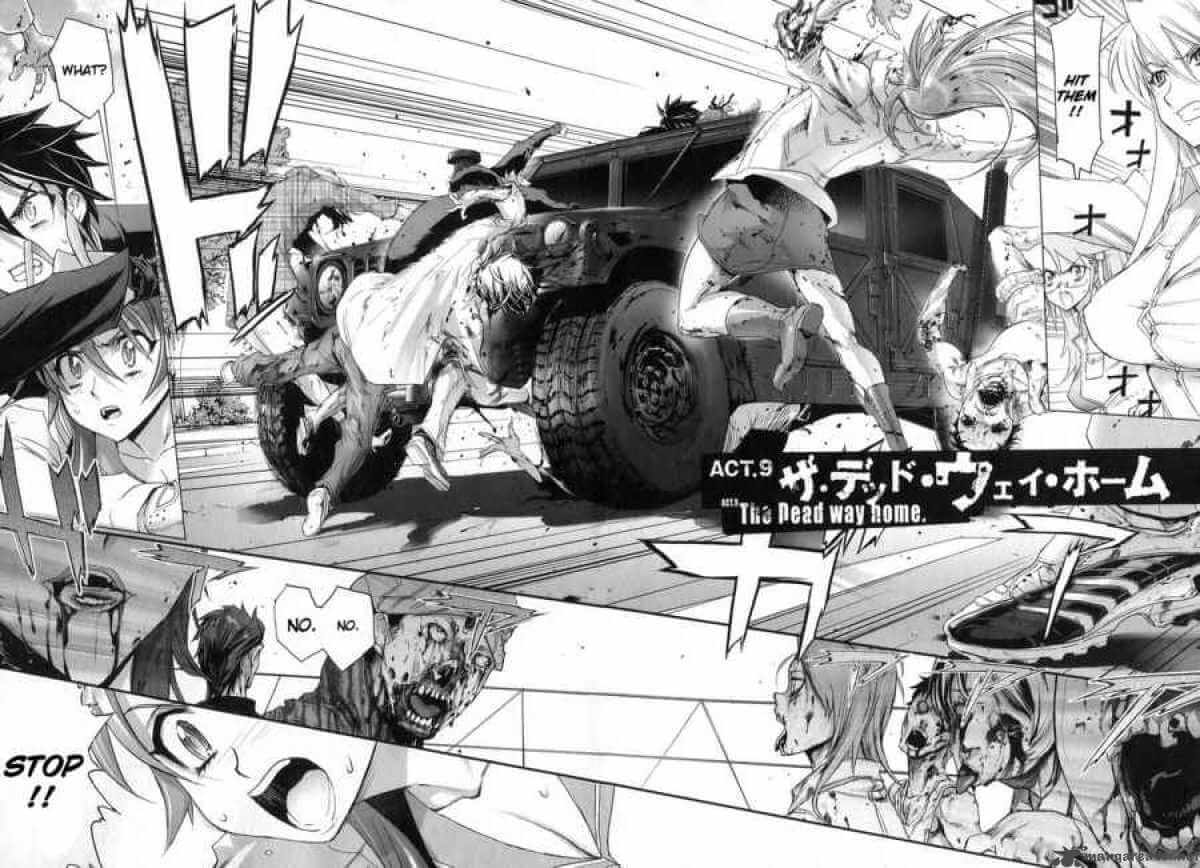
If you’re a Highschool of the Dead fan, consider exploring the source material that inspired the anime. The manga series, written by Daisuke Satō and illustrated by Shōji Satō, offers a deeper and more comprehensive understanding of the story and its characters. Unfortunately, the manga remains incomplete due to the untimely death of Daisuke Satō in 2017, leaving fans with a cliffhanger that may never be resolved.
However, that shouldn’t stop you from enjoying the existing volumes of the manga. The manga offers more insight into the backgrounds and motivations of the characters, as well as their relationships with each other. The vivid artwork, intricate plot, and engaging characters make for a compelling read that will draw you into the world of HOTD.
HOTD’s Legacy: Inspiring a Generation of Zombie Anime
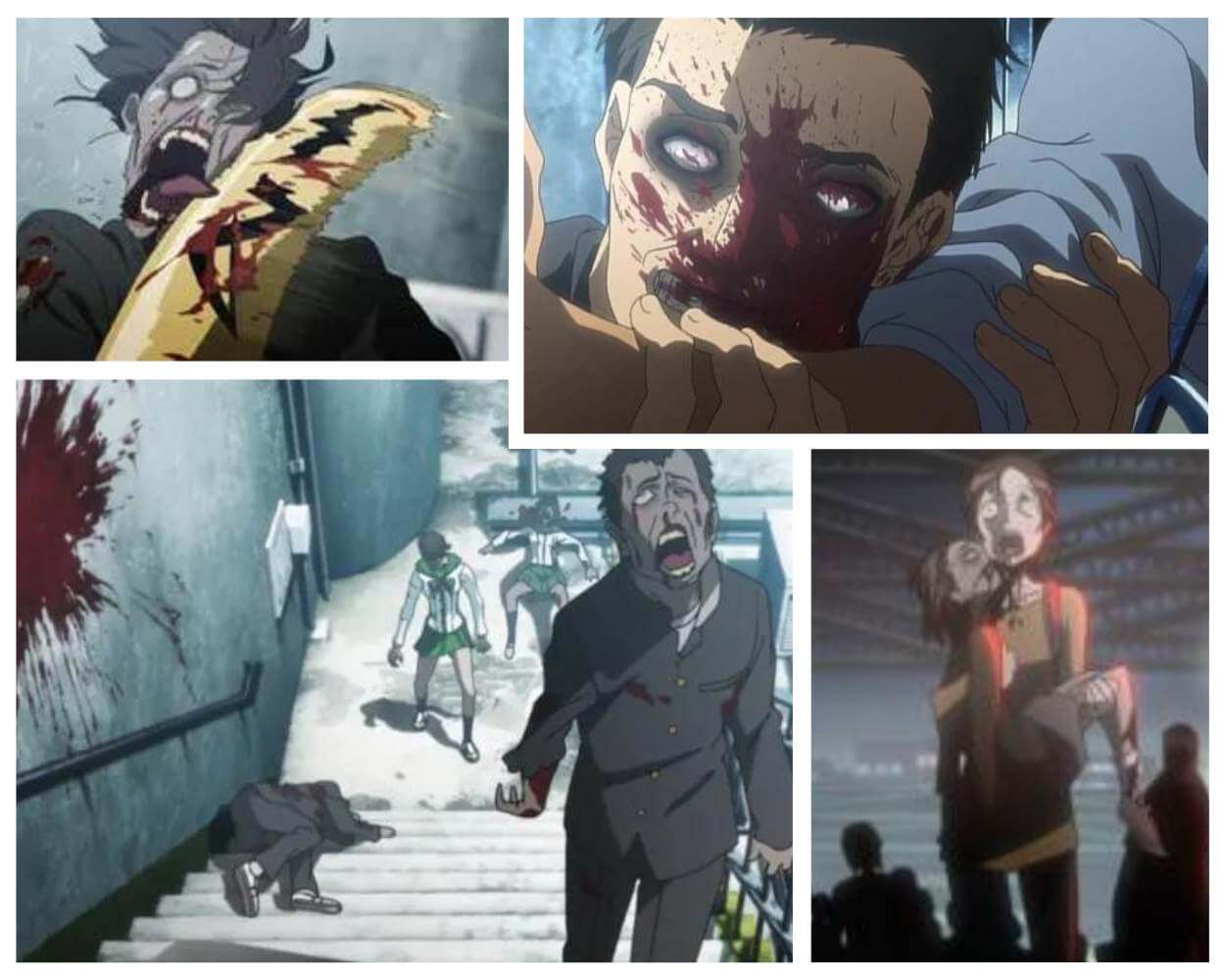
Highschool of the Dead has significantly impacted the anime world, with its unique combination of zombies, action, and high school drama setting a new standard for the genre. The show’s popularity has influenced the emergence of several zombie-themed anime and manga, each adding its spin to the genre. However, HOTD’s impact is undeniable, as it remains one of the most beloved and iconic zombie anime.
The series’ success lies in blending disparate elements cohesively and engagingly. The zombies and horror elements create an intense and thrilling atmosphere, while the high school drama adds emotional depth and relatability to the story.
The characters’ struggles to survive against the undead while navigating the complexities of adolescence resonate with viewers, making them invested in the story’s outcome.
Character Deep Dive: The Heroes of the Apocalypse
These characters from the show, with their dynamic relationships and personal growth, make them relatable and engaging to viewers. As the characters navigate the treacherous new world of the zombie apocalypse, their struggles and triumphs become the story’s driving force.
Takashi Komuro: The Reluctant Leader
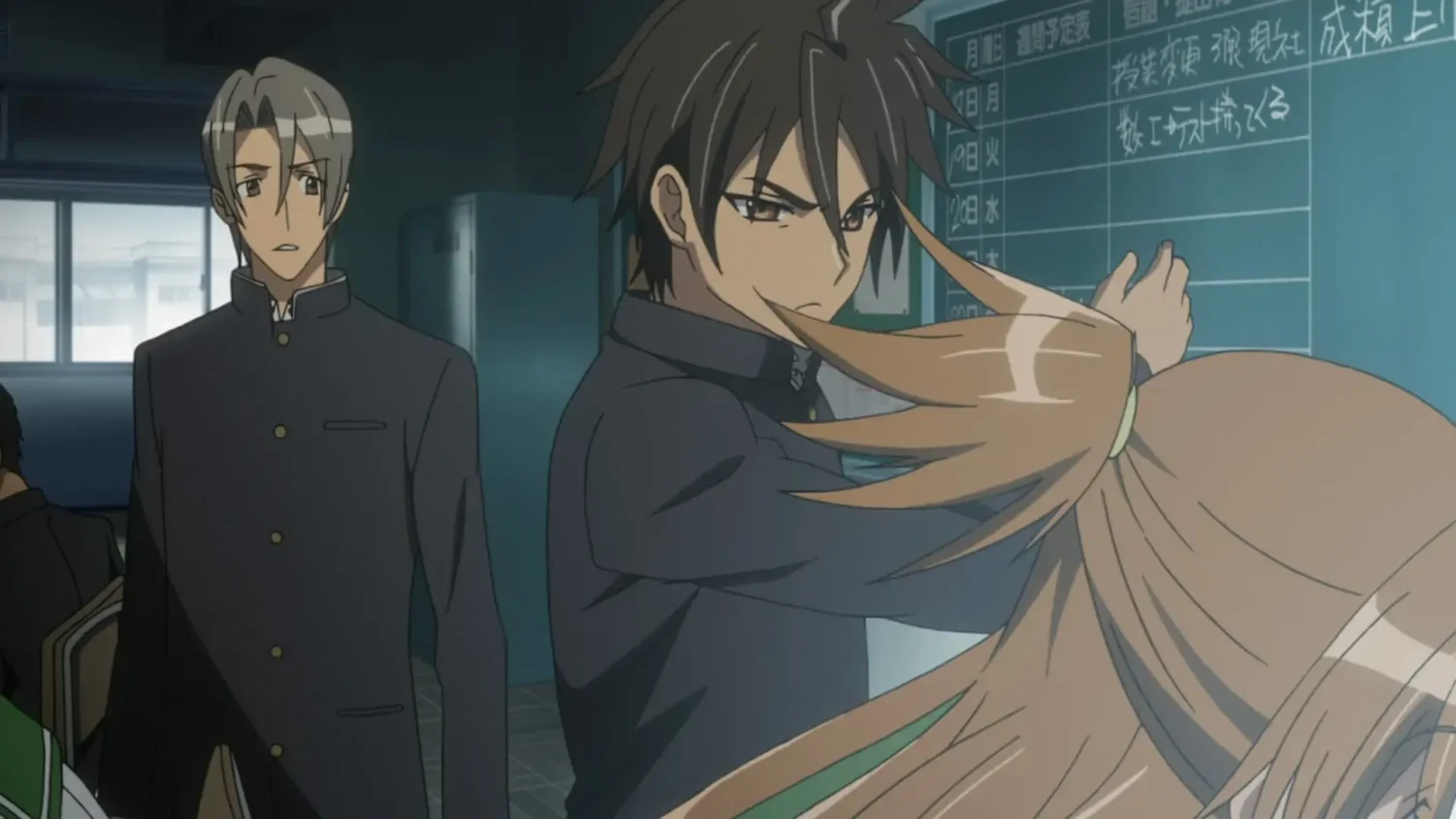
Takashi Komuro emerges as the group’s leader, not by choice but by necessity. Initially hesitant, he grows into the role as the story progresses. Underneath his brooding exterior lies a strong sense of responsibility and loyalty to his friends. Watch as Takashi evolves from a directionless teenager to a decisive survivor in a world gone mad.
Rei Miyamoto: The Fiery Spear-Wielder
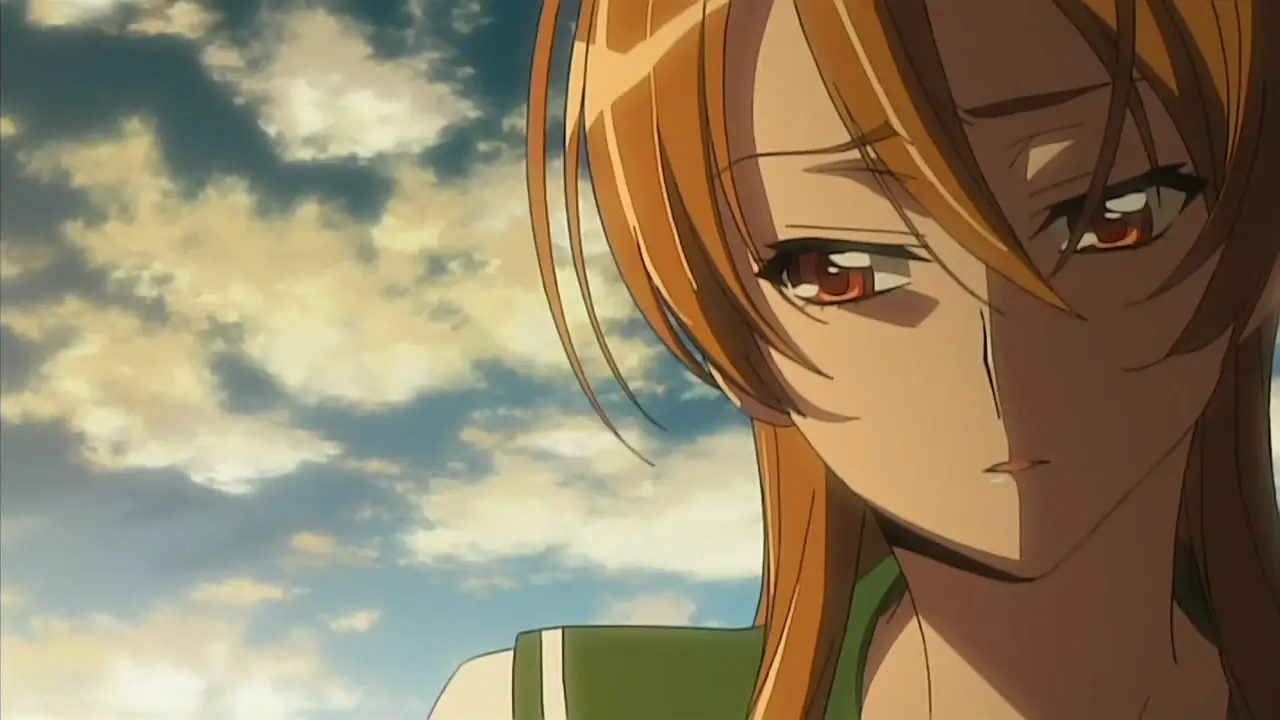
Rei Miyamoto’s strong-willed personality is evident from the start. As a member of the Sojutsu Club, she wields a spear with deadly precision. Her tumultuous relationship with Takashi adds an emotional layer to the story, while her unwavering determination makes her a force to be reckoned with.
Saeko Busujima: The Calm and Collected Swordswoman
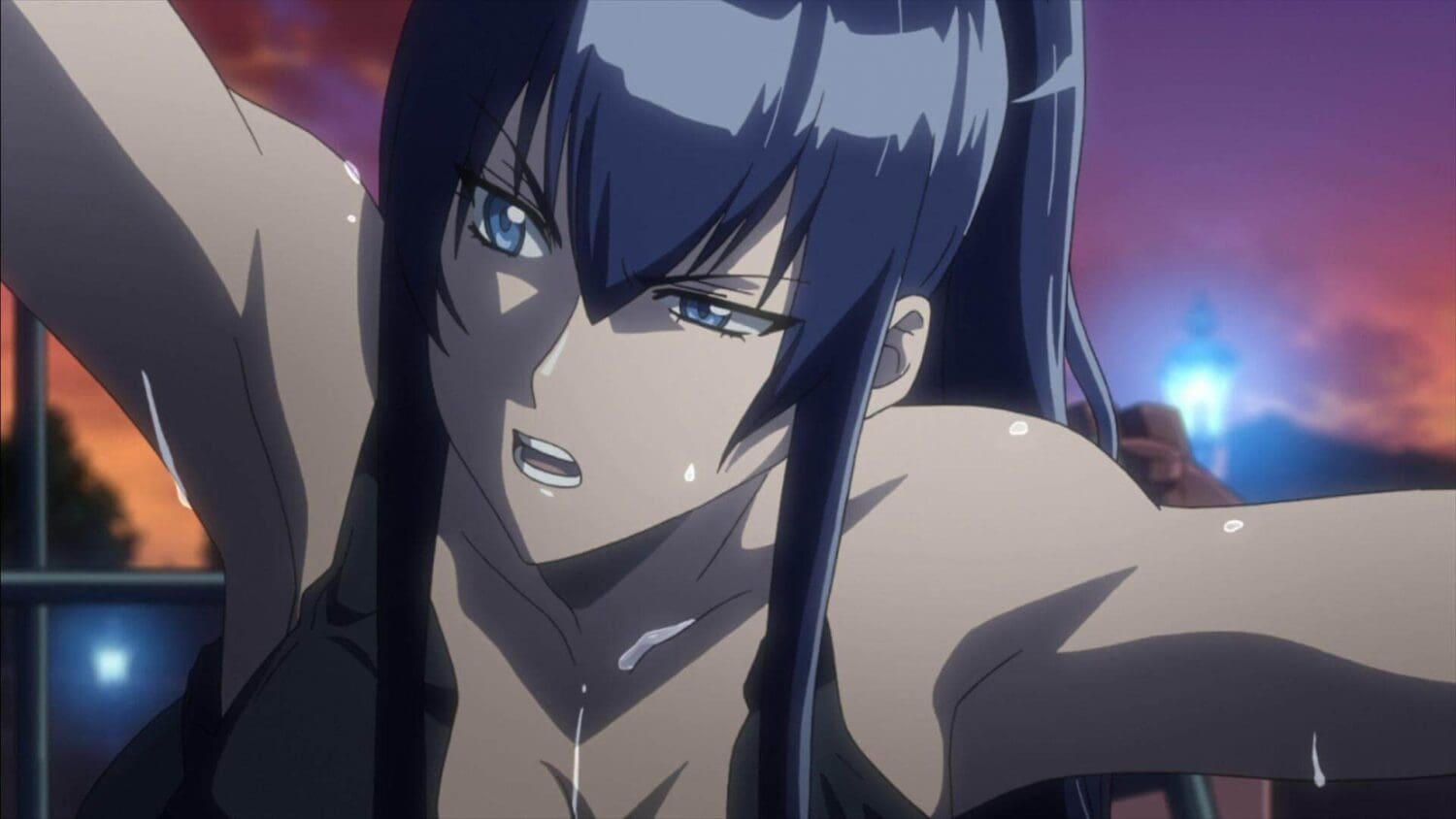
Saeko Busujima is the embodiment of grace under pressure. As the president of the Kendo Club, she is a skilled swordswoman who eliminates zombies with a cool head and a ruthless demeanor. Saeko’s mysterious and enigmatic nature keeps viewers on their toes, while her unwavering loyalty to her friends makes her an invaluable group member.
Kouta Hirano: The Gun Enthusiast
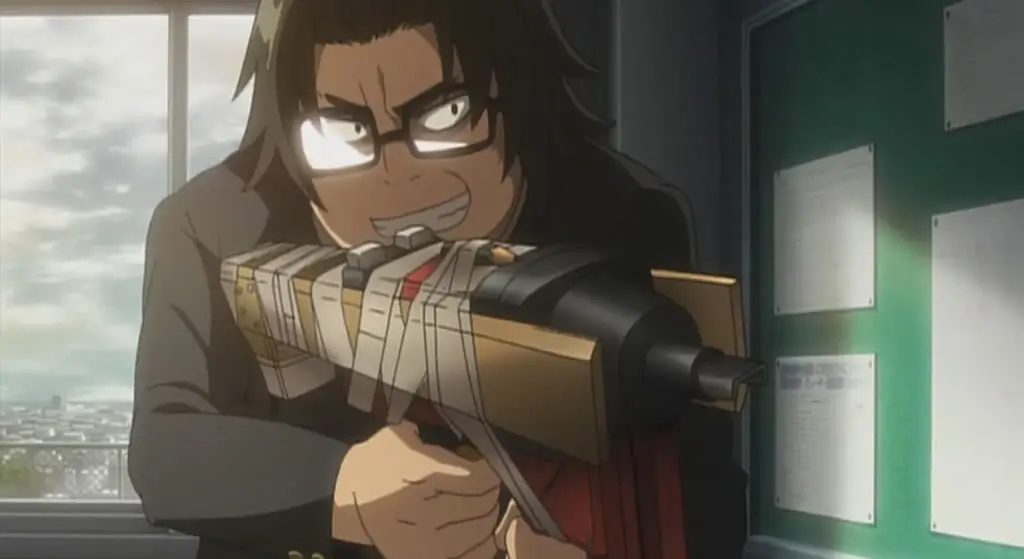
Kouta Hirano is the group’s go-to guy for all things firearms. A self-proclaimed gun otaku, Kouta’s extensive knowledge and impressive marksmanship prove invaluable in their battle against the undead. Beneath his geeky exterior lies a fiercely loyal friend who would do anything to protect his comrades.
Saya Takagi: The Genius Strategist
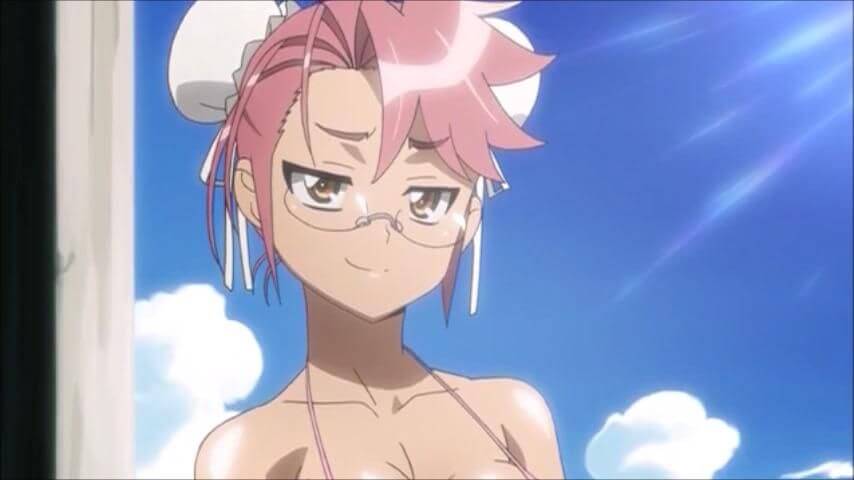
Brains and beauty combine in Saya Takagi, the group’s resident genius. Blessed with a brilliant mind, Saya’s quick thinking and tactical prowess are instrumental in keeping the group alive. Her sharp tongue and no-nonsense attitude hide a softer, more vulnerable side that occasionally peeks through the tough exterior.
Shizuka Marikawa: The Compassionate Nurse
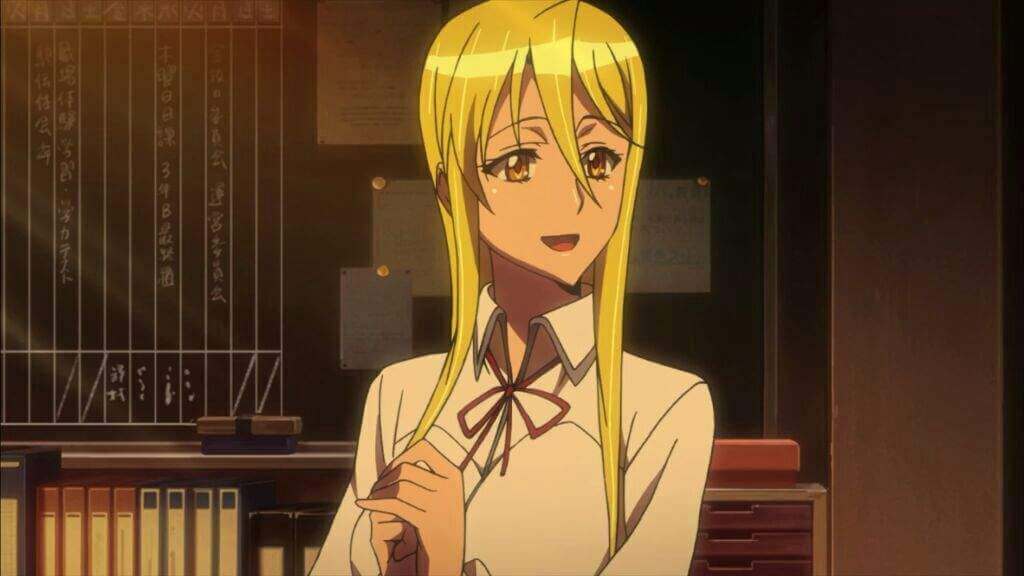
Shizuka Marikawa brings a nurturing presence to the group as the school’s nurse. Her medical knowledge and caring demeanor prove invaluable, as she tends to the group’s injuries and provides emotional support. Despite her ditzy moments, Shizuka’s unwavering compassion makes her a critical team member.
The Future of Highschool of the Dead: Will We See a Season 2 or 3?
Since its debut, Highschool of the Dead has garnered a dedicated fanbase eager to see the story continue. However, as of my knowledge cutoff in September 2021, no concrete plans for a second season have been announced. This may be partly due to the unfortunate passing of the manga’s writer, Daisuke Satō, in 2017, which left the source material incomplete.
Despite the uncertainty surrounding the future of the anime, hope remains for the continuation of the series. The popularity of HOTD could inspire the creators to resume the story, even without Daisuke Satō’s direct involvement. Alternatively, a new season could take a different direction, venturing beyond the manga’s storyline and exploring new narrative possibilities.
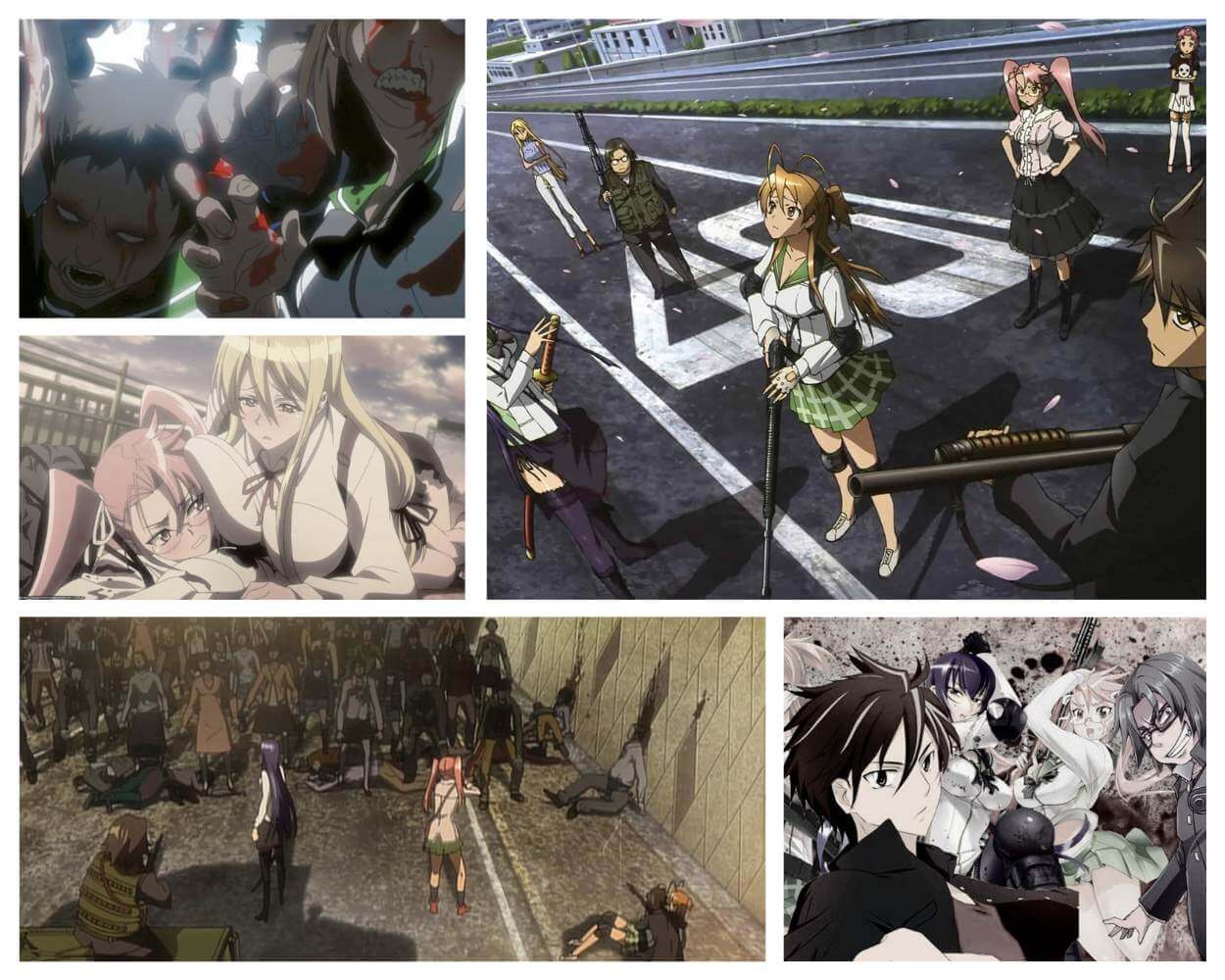
Will We See a Season 2 or 3?
In the world of anime, surprises are always around the corner. It’s not unheard of for a series to make a comeback after a lengthy hiatus, so fans should never lose hope entirely.
While the prospects of a second or third season remain uncertain, the existing episodes of Highschool of the Dead continue to captivate viewers with their thrilling blend of horror, action, and high school drama.
In the meantime, fans can continue to enjoy the manga, rewatch the anime, or explore other zombie-themed shows inspired by HOTD’s legacy. The story may have paused, but the impact of Highschool of the Dead lives on in the hearts of its dedicated followers.
Highschool of the Dead Facts
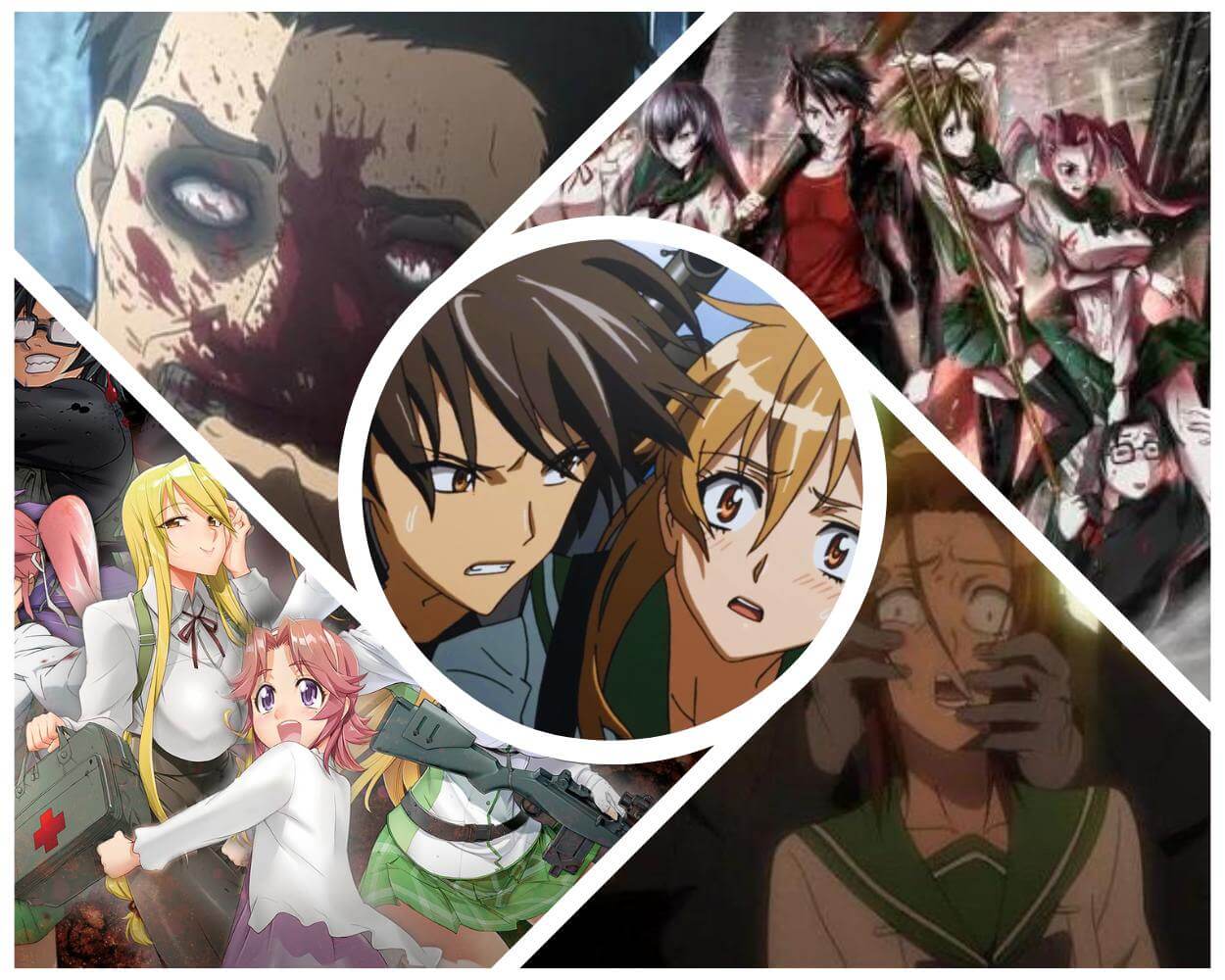
“Highschool of the Dead” (学園黙示録, Gakuen Mokushiroku) is a Japanese manga series written by Daisuke Satō and illustrated by Shōji Satō.
It has been adapted into an anime television series, which aired from July 5, 2010, to September 20, 2010.
Here are some trivia and facts about the series:
Manga and anime hiatus
The original manga began serialization in Monthly Dragon Age in September 2006 and went on hiatus in 2011. Unfortunately, the manga never resumed, as the author, Daisuke Satō, passed away in 2017. The anime has not had any new seasons since its initial run in 2010.
International appeal
“Highschool of the Dead” has been well-received outside of Japan, with fans appreciating its mix of horror, action, and fan service. The anime has been licensed for English releases in North America, the United Kingdom, and Australia.
Inspirations
The series draws inspiration from zombie apocalypse films and shows, such as George A. Romero’s “Night of the Living Dead” and the Resident Evil video game series.
Censorship
Due to its graphic violence and sexual content, “Highschool of the Dead” has faced some censorship in certain broadcasts and releases. Some scenes have been modified, and sometimes, episodes have been delayed or pulled from broadcast schedules.
OVA
An original video animation (OVA) episode titled “Highschool of the Dead: Drifters of the Dead” was released on April 26, 2011. The OVA features the main characters stranded on an island and serves as a humorous, fanservice-focused side story.
Music
The opening theme song for the anime is “HIGHSCHOOL OF THE DEAD” by Kishida Kyoudan & The Akeboshi Rockets. In contrast, the ending theme song is “Kimi to Taiyou ga Shinda Hi” (The Day You and the Sun Died) by Maon Kurosaki. The anime also features multiple ending songs throughout its 12-episode run, showcasing various aspects of the characters and their relationships.